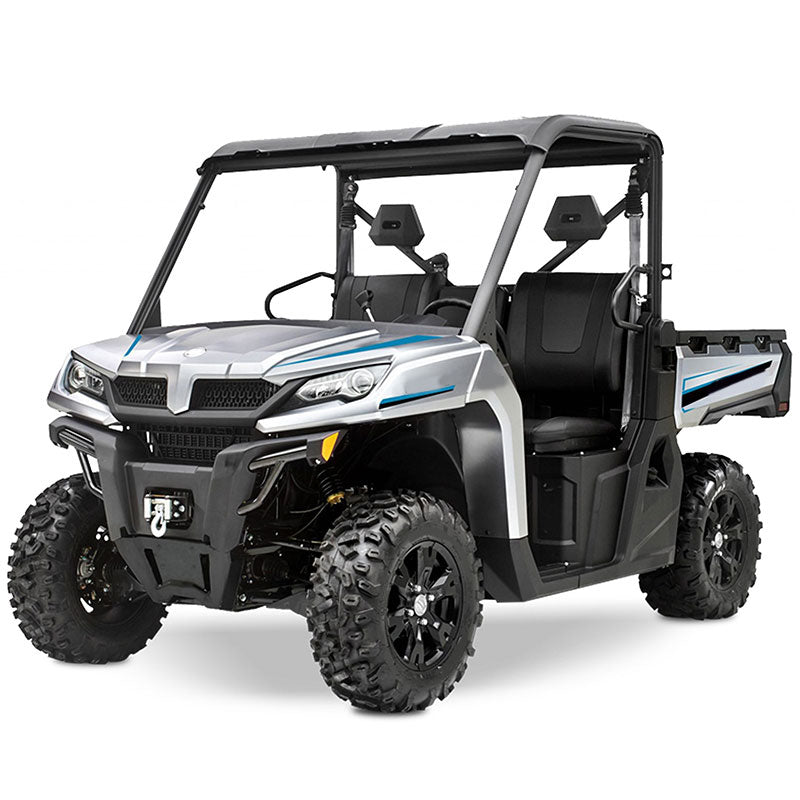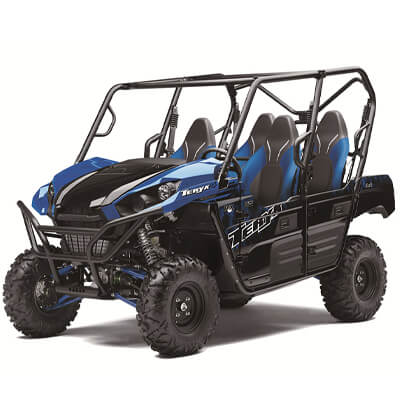CVT vs. DCT: Which UTV Transmission is Right for You?

In UTVs, the transmission has a significant impact on how your ride feels and performs. Whether you're enjoying smooth trails or tackling rugged terrain, your transmission has a huge impact on handling, acceleration, and overall driving experience. There are two main types you should know: Continuously Variable Transmission (CVT) and Dual-Clutch Transmission (DCT).
CVT provides smooth, seamless power with no gear shifting necessary, making it ideal for riders who value simplicity and want to focus on the journey. DCT, on the other hand, provides a snappier, higher-performance feel with faster, more precise shifts and improved control—ideal for cyclists who want power and precision at every turn.
Understanding the distinctions between these transmission types is critical for any UTV buyer or enthusiast. Whether you're a casual weekend adventurer or a seasoned off-road enthusiast, choosing the right transmission will elevate your ride and help you make the most of your UTV experience.
What is a CVT (Continuously Variable Transmission)?
A CVT is an automatic system designed for smooth and efficient power delivery. Unlike traditional transmissions with fixed gears, it uses a belt and pulley mechanism to continuously adjust the engine-to-wheel ratio, enabling seamless acceleration without the need for manual or stepped gear shifts.
Advantages of CVT
1. Smooth Power Delivery: A CVT accelerates consistently and smoothly, making it excellent for handling various terrain without jarring gear changes.
2. Increased Fuel Efficiency: Compared to traditional transmissions, CVTs can enhance fuel economy by keeping the engine in its optimal power range.
3. Ease of Use: Because CVTs do not require gear shifting, they are simple to operate and appropriate for riders of all skill levels.
4. Cost-Effective: CVTs are generally less expensive to build and repair, and their simple design facilitates maintenance.
Common UTVs with CVT
Many popular UTV models utilize CVT for its simplicity and reliability. Some of the most notable include:
Popular UTVs with CVT include the Polaris RZR, which is known for its versatility and off-road capability; the Can-Am Maverick, which is known for its performance and comfort; and the Yamaha Wolverine, which is known for its dependability in both work and enjoyment.
These UTVs feature CVT technology to deliver a balanced mix of performance and ease of operation, making them popular among both casual and serious riders.
What is a DCT (Dual-Clutch Transmission)?
A DCT is an advanced type of transmission that uses two separate clutches to manage odd and even gears. This design enables faster and smoother gear changes without interrupting power delivery, significantly enhancing performance and efficiency. DCT operates semi-automatically, allowing riders to switch between automatic and manual shifting for a more tailored driving experience.
Advantages of DCT
1. Faster, Smoother Shifts: DCT offers near-instantaneous gear changes, making it quicker and more seamless than traditional manual transmissions.
2. Enhanced Control and Performance: Its precision shifting provides better handling and responsiveness, especially in high-performance or aggressive riding scenarios.
3. Improved Power Efficiency: By minimizing power loss during gear changes, DCT maximizes acceleration and overall driving efficiency.
Common UTVs with DCT
UTVs using DCT technology, such as the Honda Talon with its performance-oriented design and the Kawasaki Teryx KRX developed for difficult terrain, are intended for riders that value great performance, control, and a dynamic, exciting trail experience.
Performance Comparison: CVT vs. DCT
1. Acceleration: CVT provides smooth, gradual power delivery, while DCT offers quick, precise shifts for enhanced acceleration and responsiveness.
2. Handling and Off-Road Capability: CVT is more forgiving and easier to control in low-speed, technical terrain, whereas DCT excels in high-performance and aggressive off-road riding.
3. Fuel Efficiency: CVT is generally more efficient than DCT, which promotes performance at the expense of somewhat greater fuel consumption.
4. Driver Control: CVT is fully automated for convenience of use, whereas DCT provides semi-automatic operation, giving the rider more control over gear shifts.
Ease of Use and Maintenance
CVT: CVTs are easier to use because there is no need for manual shifting, and while maintenance requirements are normally minimal, belt replacements may be required on a regular basis.
DCT: DCT systems are more complex, requiring riders to learn how to use them effectively, and they require more maintenance, perhaps leading to increased repair costs due to their elaborate design.
Cost and Value
CVT: With lower initial costs and simpler maintenance, CVTs are a common choice for entry-level and mid-range UTVs, offering great value for recreational users.
DCT: Although more expensive upfront, DCT systems provide exceptional performance value, especially for high-end racing or competitive off-roading applications.
Suitability for Different Types of Riders and Uses
CVT: Perfect for casual riders, beginners, and those who value comfort and simplicity, CVTs are ideal for recreational activities, trail riding, and moderate off-road adventures.
DCT: Designed for experienced riders, performance enthusiasts, and racers, DCT systems excel in delivering a dynamic experience for extreme terrains and aggressive off-road scenarios.
Conclusion
When it comes to deciding between a CVT and a DCT for your UTV, the final decision is based on what you value most in a ride.
The CVT provides smooth, simple running, making it ideal for novices or casual riders seeking simplicity and dependability on trails or moderate terrain. In contrast, the DCT provides faster, more precise gear changes, catering to experienced riders seeking increased control and performance, particularly on difficult or aggressive terrain.
Consider your riding style, experience level, and the type of terrain you’ll be tackling to determine which transmission suits you best. Think about your experience level, the type of riding you enjoy, and the terrain you’ll be exploring. Trying out UTVs with both transmission types is the best way to find out which one matches your style and gives you the ultimate off-road experience.
FAQs
Q1: What is the life expectancy of a dct transmission?
A1: A Dual-Clutch Transmission (DCT) in a UTV normally lasts between 5,000 and 20,000 miles, depending on maintenance and riding conditions. To maximize longevity, adhere to the manufacturer's maintenance schedule, avoid excessive wear, and conduct regular inspections to detect any problems early.
Q2: Are DCT transmissions noisy?
A2: DCT transmissions in UTVs are normally quiet, but you may hear some clunking or clicking during gear shifts. These sounds are typical; however, excessive noise may suggest a problem, such as low fluid or wear, and should be investigated.
Q3: Is DCT good for long drives?
A3: Yes, DCTs are well-suited for long drives, offering smooth and quick gear shifts that enhance comfort and reduce fatigue. While they may feel less smooth at low speeds or in stop-and-go traffic, they provide a responsive and efficient driving experience for longer, consistent drives.












Leave a comment